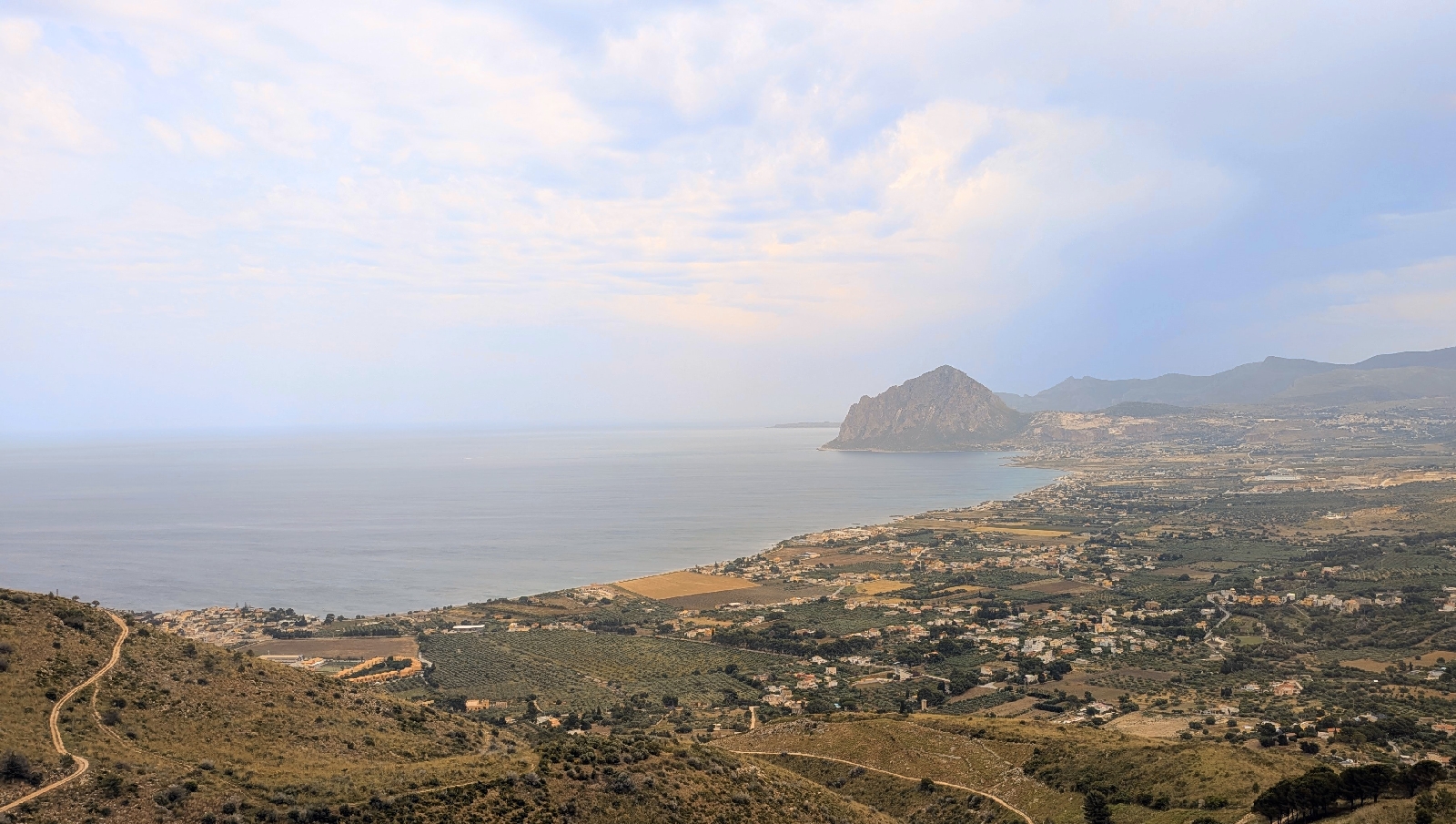Consulting the Oracle
Monday, May 29
Day 3 of the Tour
Athens to Delphi
Part One: Arachova - On the road to Delphi
Notice Mary telling everyone that Christine always stands too close to the edges of cliffs.
We were only in Arachova long enough to grab some lunch, stretch our legs, take some breathtaking photos, and race back to the bus in the first drenching downpour of this trip.
🌧️
Climb the stairs to the church and report back on how many steps there are? Challenge accepted!
Mary was ready to skip lunch so we'd have time to hike, but I got a quick sandwich called a chiapata to eat along the way. Yum 😋
So many beautiful flowers pop out of the stones everywhere we've been in Greece. I love how they hang from the walls.
At the top, we found the church plaza armed to fight off the Nazis. Mary is doing her part.
After a few more steps and checking out a few shops, we dashed through the rain to our bus and headed for Delphi.
Part Two: Delphi
The Great Excavation at Delphi was started in 1892 by French archaeologists and continued during 10 years of startling discoveries. Since ancient times, people had built homes over the mostly-buried ruins of the ancient historical site of the Oracle at Delphi, but after a devastating earthquake in 1870, it became possible to remove the ruined homes and dig for history. They found astonishingly intact relics and built a museum to house them. Many more may still be buried right on site.
The Museum at Delphi
This Greek sphinx once perched atop a 38-foot high column. The white sections were restored while the darker parts are original.
Our local guide Penny explained what the site - which was actively used for over 700 years - would have looked like in classical times.
Two famous Kouros statues were unearthed in almost perfect condition. Penny explained that they were depicted as not "naked"/unclothed but "nude," or clothed in their nudity, so it would be obvious to their enemies that Athenian young noblemen were wealthy, healthy and strong.
There were so many interesting artifacts. I liked this part of a frieze depicting Achilles (hero of the Trojan war) with a shield displaying the head of Medusa.
With Medusa's ability to turn anyone who looks at her to stone, and her tongue sticking out (like a corpse), this shield represents death - perhaps Achilles' or all those killed in the war.
This bronze statue of a charioteer - part of a larger original sculpture - was found completely intact. For the first time, such a classical Greek statue was found with its original eyes (otherwise stolen due to the precious stones used to create them), even down to exquisite details like eyelashes. When it was new and fully polished, the bronze statue would have shone like gold.
The Archeological site at Delphi
https://whc.unesco.org/en/list/393/
Mary is supporting the remains of the Temple of Apollo at Delphi. Unlike the secluded cave at the summit of a remote mountain we had imagined, the Oracle at Delphi was like a small city centered around this temple. where supplicants tried to determine Apollo's will through the intercession of a woman who answered their pressing questions. Or did she?
To me, some of most amazing finds at Delphi were the actual records written on stone walls. Can you see the letters carved into the rock?
I asked Penny if modern Greeks like her could read these words. She may have dodged the question but showed us a sample of what one of the rock carvings recorded:
Sometimes people recorded agreements like this one, or created inscriptions on the bases of statues, saying things like "Thank you, Apollo, for helping us defeat the Spartans."
We could tell you we're filling our water bottles at Delphi's sacred spring, but that might be considered stretching reality a bit.
Many of our fellow travelers also trekked to the highest point of interest on the mountain, the stadium.
Games similar to those at Olympia were held at Delphi and other sites. This stadium was used for practicing sports as well, like the javelin.
Our tour members who hiked to the top of the site to see the stadium:
John, Thomas, Stephanie, Dr. Bob, Hal and Jag with me and Mary.
After we thought all the climbers were accounted for, a second wave arrived:
Rick, Keith in back with Mary and me; Karen, Judy, Kendra and Kyle
What's left of the Temple of Apollo.
The ruins actually make a lot more sense when seen from above.
Part Three: Dinner
The restaurant was surrounded by grape vines and offered an astonishing view.
This family traveled in our group: Mom Allison, Ella, dad John, Lily and the youngest tour member, Ava.
So much to see and learn, so little time.
- Christine


































Comments
Post a Comment